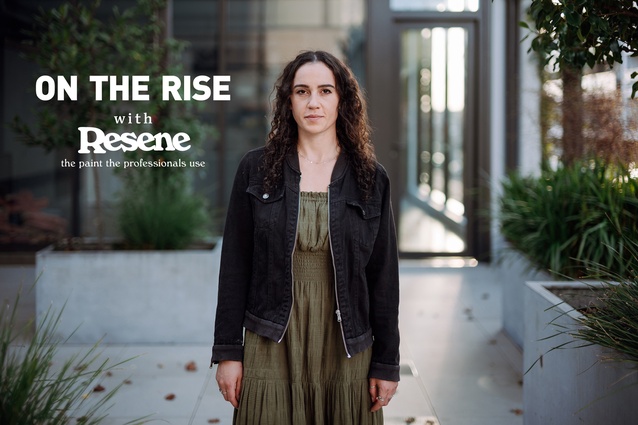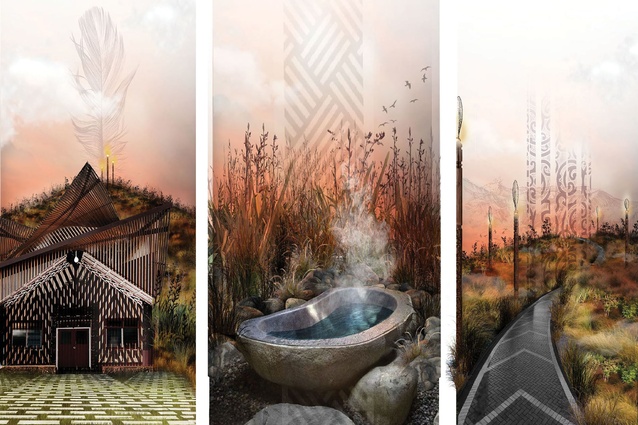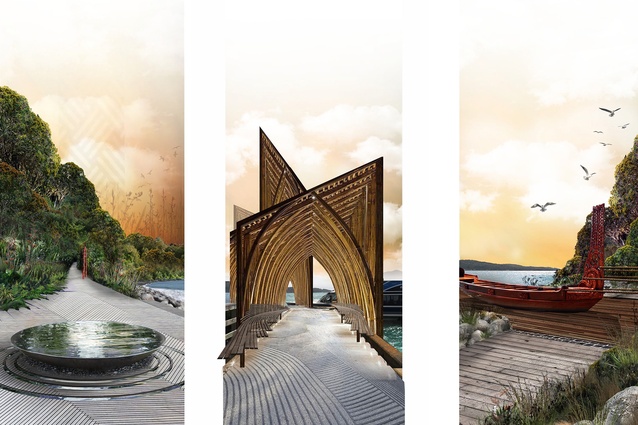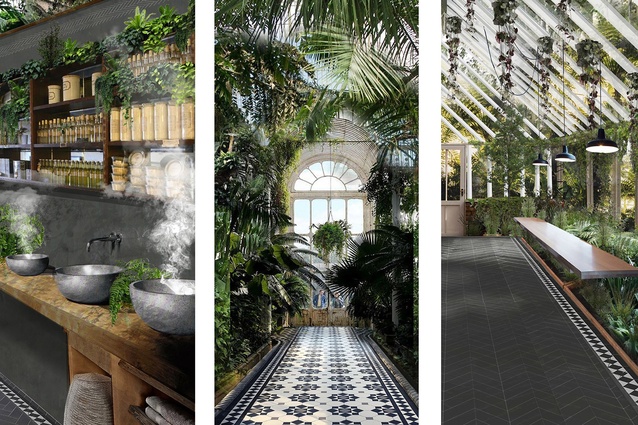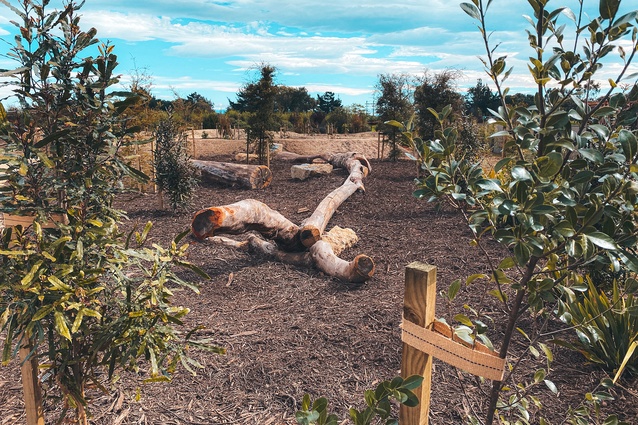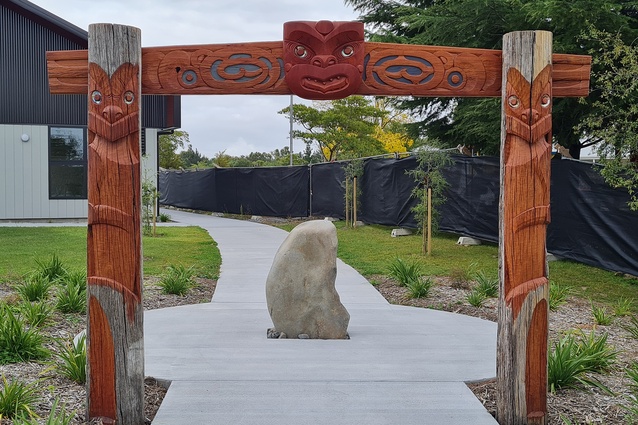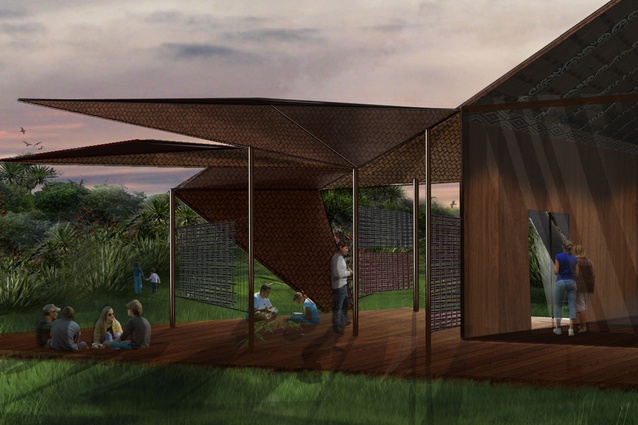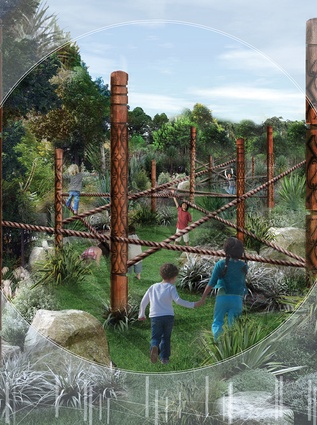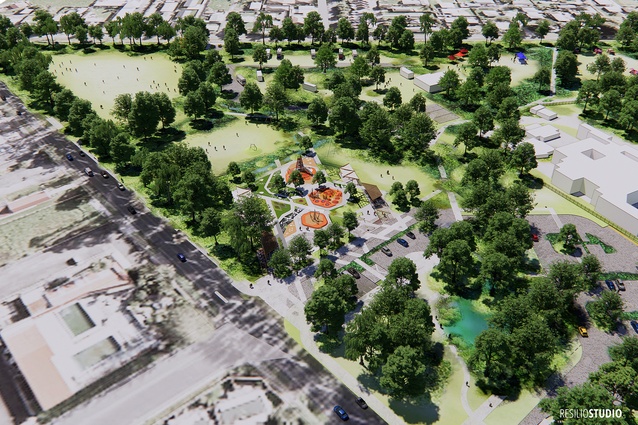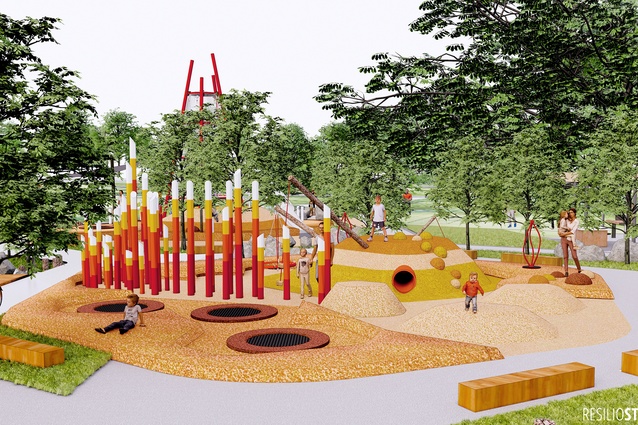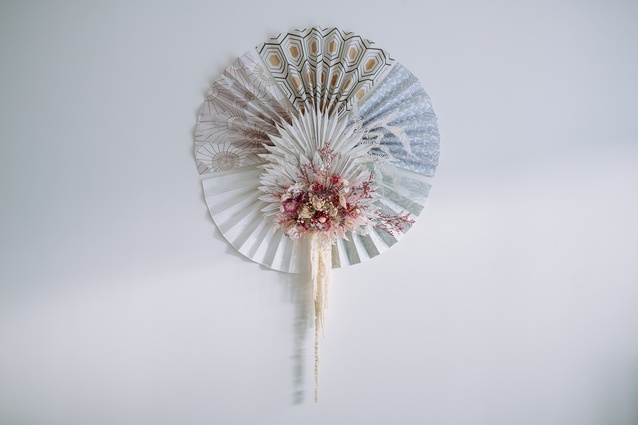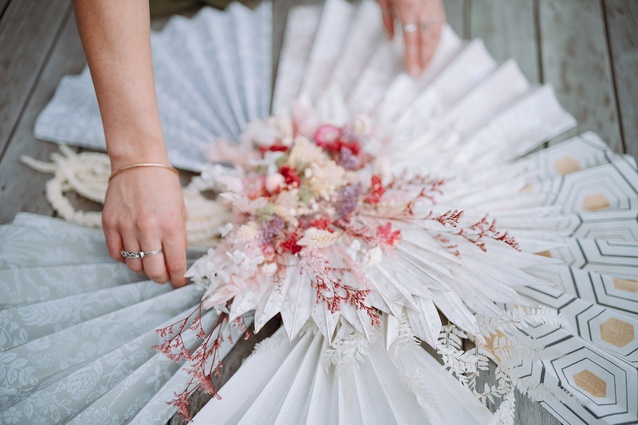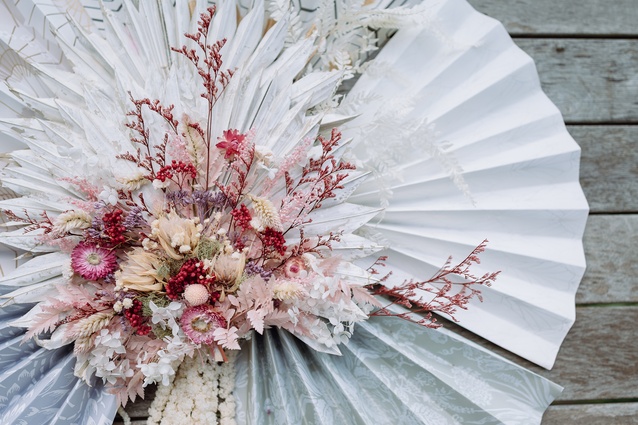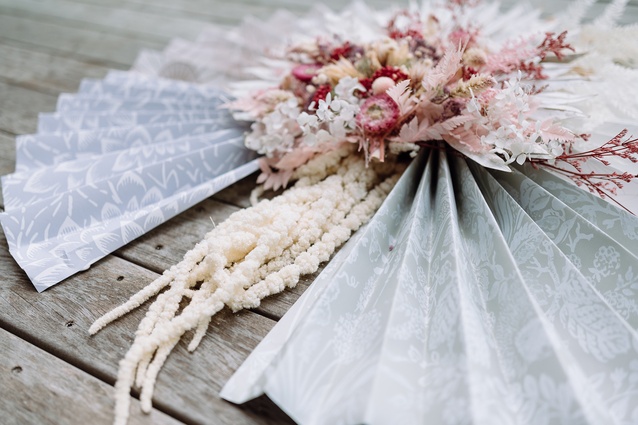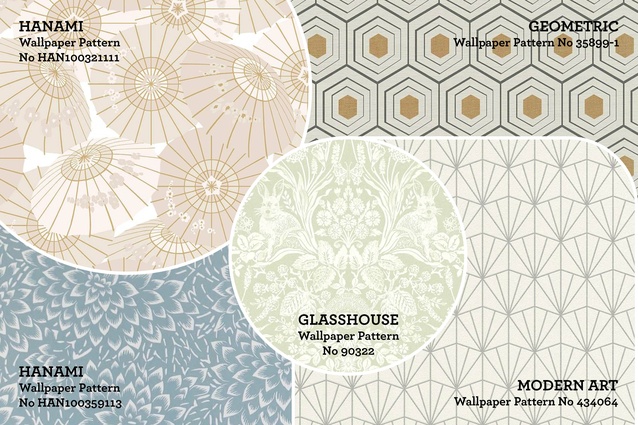On the Rise: Claudia Boyo
The ArchitectureNow On the Rise series, supported by Resene, seeks to highlight designers around New Zealand who are making their mark on the industry. This month, Ashley Cusick sat down with Claudia Boyo, a landscape architect at Resilio Studio who sees well-designed environments as the great equaliser. They discuss designing with indigenous narratives, engaging the community and much more.
Ashley Cusick (AC): Let’s start from the beginning. When did your interest in design begin?
Claudia Boyo (CB): My interest has always been in landscape architecture and that came from growing up and spending a lot of my childhood in Hawkes Bay, which is where my mum is from. I spent a lot of time out on the farm or on the coast and I think the beauty of that was the freedom to roam and also the excitement and versatility that comes from nature. Then, there was the contrast of coming back to Auckland and not having that freedom and not having those challenges and natural play. As I got older, I realised that landscape architecture had the ability to bring more nature and more nature play into cities and that got me thinking about this career path.
AC: When you started in the architecture school at Victoria University, were you positive that you’d go down the landscape architecture path? Or, did you ever consider other careers within the industry?
CB: I was quite set on landscape, but that is what I loved about Vic. You had the ability to go in and be open-minded and try out everything. I remember I had a lecture one day where they showed us this public versus private space plan of a city in Italy, and I loved seeing all the public space and the ability to impact everyone using landscape architecture. It was quite a moment for me to realise that public space is something everyone uses and it impacts everyone’s day-to-day life. With landscape architecture, you have quite a big chance to change that, or impact it in some way, so that’s really exciting.
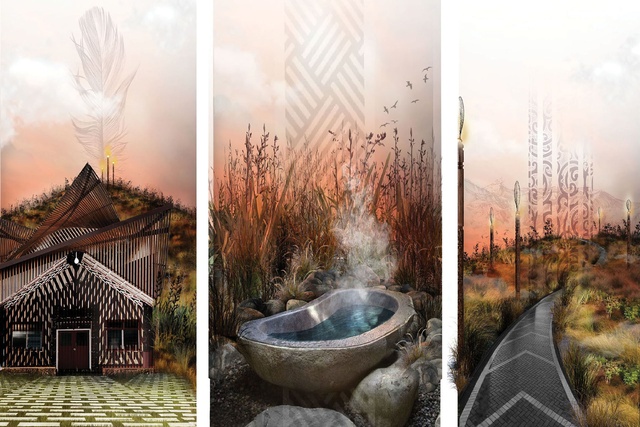
AC: Your thesis, The Isles of Iwi, won you a New Zealand Institute of Landscape Architects (NZILA) National Award in 2017. Tell us a bit more about that and what led you to pursue it as a topic.
CB: My thesis was looking at how to create a bicultural landscape on Matiu Island, in the Wellington Harbour; Somes Island is the colonial name. I went and visited it in about my second year of uni, and after the visit, I found out that the iwi Te Āti Awa actually owns the island. I was amazed because it has a really rich European history – it was a war camp and it also had a quarantine on it as well – but there was no sign of any Māori culture anywhere. Throughout our studies, we had been looking at working with Māori to visually show ownership over spaces that they have regained, and this island seemed like a really great project to work on because it was such a unique sight but also accessible from the city – it’s about 20 minutes on the boat. I worked with members of Te Āti Awa to select narratives that were really significant and embed them within the landscape but without taking away from the European history. It was about finding a synergy between the two, which I think is something that is becoming more and more important as the Waitangi Tribunal is returning land to Māori. It was a great precedent for the work I knew I really wanted to do in the future as well.
AC: There seems to be a lot of theses coming out of the universities that directly involve or engage iwi, which is an encouraging trend to see. Can you tell us what you have been up to since graduating from university?
CB: I had planned to take a year and a half off to travel and just as I was booking all my trips, I got a call from a principal who had seen a marae project I worked on in university called Hurunui-O-Rangi Marae. He got in contact with me because they were developing a new school and they wanted the entire landscape design done. That’s really rare for a school because the Ministry of Education normally only supplies money for concrete and grass. But, they were a decile 1A school – at the lower end of schools – so they had a lot of extra funding to develop their landscape. I put all my travel plans on hold and spent six months working on the design, and it was a really amazing experience and something that set in stone what I wanted to do in my career. The school was 50 per cent Māori, 50 per cent Pasifika and working with the narratives of those children, their ancestors and their local mana whenua was a really exciting opportunity.
That project kind of set me off on a trajectory of working with schools. I think that working with schools has the ability to change how our society functions and I think schools can be a really exciting way of having a positive impact on the community. For example, one big thing with this school, Kimi Ora School, was working with the teachers and learning about the curriculum and how they actually learn and play. I realised that not everyone learns in the same way, so sitting inside a classroom at a desk doesn’t suit everyone. That makes a lot of children, if they don’t learn that way, feel very incapable. There is, then, an exciting ability to create challenging play spaces for kids to develop their physical being but also to learn through doing and seeing. It shows what landscape architecture can do for communities and for cities, particularly for low-income communities. School work is very diverse as well, so you are dealing with playscapes; you are working with outdoor classes. And sometimes, like with the Kimi Ora School, spaces are also going to be used as community facilities outside of hours, so you are also creating a space to unite the locals. For Māori and Pasifika, food and performance is a big thing, so I try to incorporate those spaces in the school grounds.
AC: Did it feel like you were putting that work and professional experience on hold when you eventually did go travelling? Was it difficult to make the choice to leave?
CB: It was really hard. The timeframe for the Kimi Ora School became quite condensed because I had booked the first lot of that trip already. But, one thing that has always been really helpful with my career and my development as a landscape architect is travel. My dad is African/German, so all my family on his side are overseas and I spent a lot of my time travelling as a kid. Having seen those older cities and public spaces was really eye-opening for me and influenced a lot of the work that I do now. It enabled me to have a very open mind to things and to creating hybrids between cultures. I’ve been able to go to say, Asia, or to Europe and see how public space is there and come back and combine it with a New Zealand flavour. It’s meant I can look at things in more than one way.
AC: How has that sensitivity to cultural narratives, telling bicultural stories and some of the other lessons you’ve learned through education and travel influenced your professional work?
CB: I think engagement is a really huge one. That is, engagement with the community, iwi, or mana whenua and also – with the school work especially – teachers and principals. Each typology or group is very different. With mana whenua, going in with a completely open mind is important, as each iwi works in a different way and is going to have a different way that they want to engage. There was quite a big difference between the Hurunui-O-Rangi Marae project that was in my third year versus my thesis – the iwi worked completely differently. For the marae project, there was a representative who gave all of the narratives. With my thesis, the iwi there had a board with multiple representatives. I also learned a lot about designing with those narratives, which kind of feeds into the engagement. It’s an ongoing process of figuring out how you work with mana whenua to draw out significant narratives and how to represent them in the landscape tangibly or intangibly. It is something I am constantly learning about and will continue to learn as I work across different iwi groups.
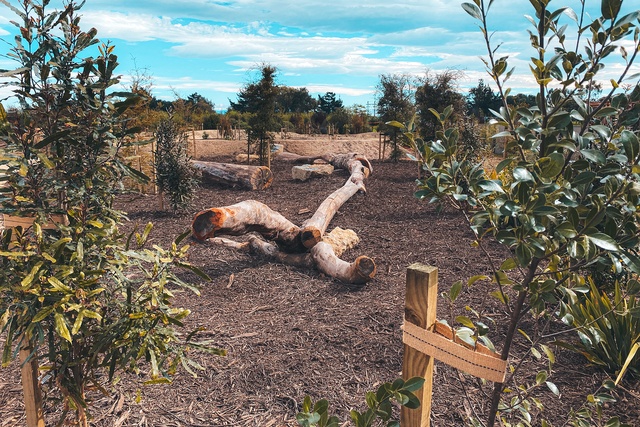
AC: Is that something that you grew up being aware of and sensitive to, or have you learned more as you’ve started your professional work?
CB: I was very lucky that my first ever teacher, Mrs Grieves, was Māori and introduced me to very high-level Māori concepts. I am not Māori myself, but having that introduction really shaped my interest in working with mana whenua. And then, it was definitely a process of learning through university and going out to communities. My lecturer, Bruno Marques, who is part of the landscape programme at Victoria, taught us about how to engage, how to take on the narratives and then how to represent them.
AC: I was listening to a podcast recently called the Longform Podcast, which is about journalism, but the woman on it was talking about telling indigenous peoples’ stories and being a storyteller rather than a story-taker. Or, using your skills to convey their narrative rather than present it as your own. I think it echoes a similar sentiment to what you’re describing with your designs.
CB: Yes, so true. I love that. We are not the ones creating the narratives; we are not the ones creating the concepts; we are using our profession as a tool to enable these to be apparent in the landscape, or to become actualised. A project I have just recently been working on is called Kaipātiki Reserve. It is the reserve around Parakai Springs, just past Helensville. There we are working with Ngāti Whātua O Kaipara. They put forward a representative that we worked closely with, and he brought to light all the really significant narratives of the place. He also worked with us to provide a colour palette, geometric forms and significant species that were also incorporated into the design. Working with people like that is so beneficial to designers like us to enable us to watch the process.
AC: When it comes to engaging the community, how do you take what I would presume is a really wide-ranging set of viewpoints and distil it into one design?
CB: It is very challenging, especially in the school realm. What we do is generally engage with the students first, and that creates a platform for us to work off to then engage with the community. With Kimi Ora School, we got the students to create, effectively, a physical Pinterest board with typologies. One looked at water play, one looked at natural play and native play, one looked at outdoor classrooms. We then presented that to the community and got them to indicate what concepts they really liked. There was also an opportunity to add in other things they wanted. For me, it is really important to find the patterns, the things that seem to come up over and over again. With Kimi Ora, one thing that kept coming up was places to eat together and places to perform. When you start engaging with a school or a space you often have hunches, and sometimes the community ends up going against that hunch and that is a really fascinating process. But a lot of the time, the community tends to feed into those hunches. Sometimes the community suggests things you haven’t even thought of and those things make complete sense.
AC: Can you tell us more about the design for the Kaipātiki Reserve that you mentioned earlier?
CB: It is the biggest reserve in the Parakai area and folds around the Parakai Pools, which are geothermal pools. The land is really significant to Māori as it has geothermal properties, so they are looking to develop a campsite and a playground and a large field area. What was really interesting about the project was the board, Te Poari o Kaipātiki ki Kaipara. They are a mixture of council and Ngāti Whātua members working together and they are the ones who put forward the representative that we worked with to develop concepts.
The playspace that we designed had three design drivers that were identified by the representative, which were geothermal activity, the Para fern – which was very significant in the area and provided nutrients for the Ngāti Whātua people – and also the Patiki, which is a flounder. We looked to incorporate those throughout the reserve, so the playground drew off geothermal activity and is quite a bright playground with lots of geothermal elements and features ngāwhā bubbles. Ngāwhā means geothermal activity. Around the edge of that site we have community barbeque areas and these use geometric forms that the representative worked up with us that reference the flounders’ diamond shape.
Embedded all through all of that was this idea of Para, which was the fern. That brought in the natural play and meant we could incorporate mara hupara, which is traditional Māori play that is specific to the place – how Māori children used to play. It was a really exciting opportunity to work with mana whenua to develop these narratives, spatially and conceptually, to create something that really spoke to the environment and also was an education tool to teach people about Ngāti Whātua and about their ancestry and how they onced lived but with a modern twist as well.
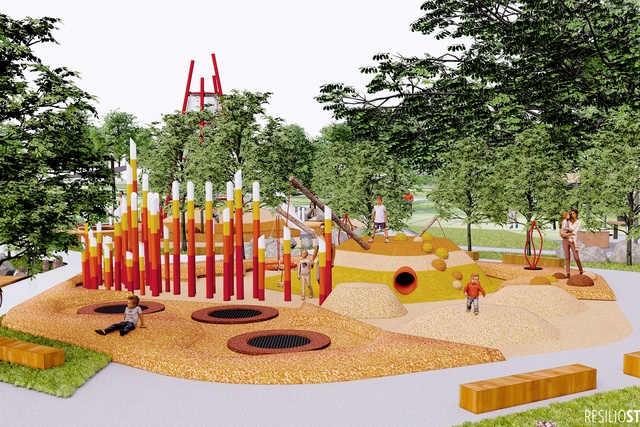
AC: Why do you think good landscapes are so important?
CB: I think landscape has the ability to mitigate a lot of the negative impacts that humans have. When I finished my masters, the University paid for me to go to British Columbia to present findings from my thesis at a conference there and one of the talks I went to was a young psychologist talking about how children learn the fundamentals of life from nature and because we are losing biodiversity in cities, children are actually losing out on these huge learnings. That is when it became apparent that schools could be a really influential area to work in because if you are able to bring this nature back into schools and kids are able to learn through doing and exploring, you are bringing back a lot of those life lessons.
AC: That idea that children learn through connection to nature, and that it is essential to human thriving, has been at the heart of indigenous culture for centuries as well.
CB: Definitely. Indigenous knowledge provides answers and the ability to solve a lot of the issues that we are facing in cities. Inequality is a big one and working with schools is something that is starting to tackle that, which is a very exciting realm to be in. When I designed the Kimi Ora school, one thing I hadn’t really liked was these plastic playgrounds that are moulded in this certain way and they tell you what you need to do. Looking back at my childhood and the farm landscape and coastal landscape, it is almost a blank canvas. You see all these different elements but you have to use your imagination, or you have to make up what you want to do with them. I think that is how I am wanting to change the face of schools, by actually bringing nature back in and creating environments where children aren’t being told what to do but they have to actually explore and discover it for themselves. I think that is what nature play and play in wilderness areas brings to the table that is different from a lot of the play you see in the cities. If we bring that back, then you get the mental health and wellbeing aspects and you also have the ecology benefits, where you are providing habitats for native species and bringing them back in.
AC: What are you looking forward to in the future of your career?
CB: School work is my passion. I see how it has the ability to impact future generations and the way that communities and society function. I think that is a really exciting realm that if we continue to develop could have really big changes to the way that communities function within New Zealand and create a sense of equality. For children, what they grew up in is what they expect out of life and I think the landscape is a really cost-efficient way to create spaces that feel really rich and kids are really proud of and can learn a lot from and play in. A landscape costs nothing compared to buildings or architecture but they can still have a great impact in a child’s life through play and through learning, through socialisation, through biophilia. I think there is a lot of untapped potential in schools and I would like to see more importance being placed on it. I think it is terrible that children who learn more through doing or seeing than by listening feel stupid or don’t back themselves so much because they are not given the opportunities to learn those ways and that is what the landscape provides for kids. I also think that Māori culture is what separates us from the rest of the world and that embedding that within our urban fabric is a really exciting aim. I look forward to contributing more to that as well.
One of the biggest issues we have is that the funding for them can take a really long time and it can be a really challenging process. I would love to set up a fund that connects companies that want to make a difference with schools. We can then produce designs that create visual resources that share what the school is wanting to do, because the visual resource is what gets the power behind the project. Once you have a vision out there you can get people really excited and that is where you can potentially bring in more funding for production. So, that is kind of a big aspiration of mine, is to be able to connect low decile schools with companies and get these designs underway.
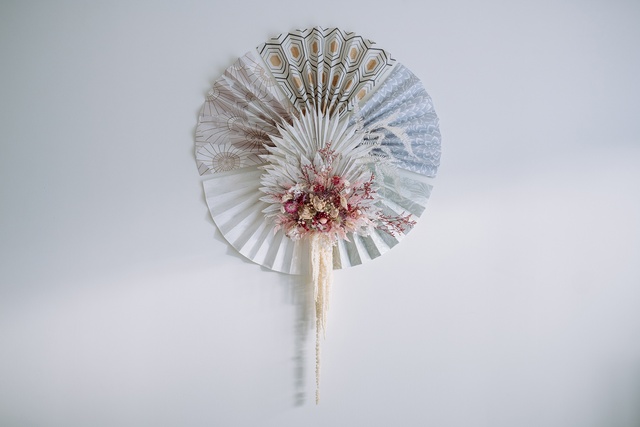
AC: What do you get up to when you are not working?
CB: I love being outdoors and I made the decision last year to move to Waiheke over the summer to be in more of a wild environment, which I loved. I got up and went for lots of walks and fishing and snorkelling as well. Also, due to my mum being quite creative and encouraging arts and crafts, I am really into dried floristry or floristry in general. It’s quite interesting because it takes the arty side and the nature side and brings them together. So I love spending my free time producing creations that can be anything from wreaths to installations; it is a really creative outlet that I really enjoy doing.
AC: Finally, you’ve used Resene products to create a mood board. Tell us what inspired your design and the product selection?
CB: I have always been drawn to natural tones and patterns as well as the contrasting randomness and order of nature itself. I selected a range of Resene wallpapers based on this and used them to inspire the creation of a floral design piece, which is at the centre of the mood board. The floral piece draws on the colours of the wallpaper and uses the patterns within them to inspire the selection and placement of florals and foliage within the piece. I then used the floral piece to influence the display of the wallpaper, allowing the mood board to become a part of the floral creation, showcasing both the influence and the output.
See more from the On the Rise with Resene series here.

